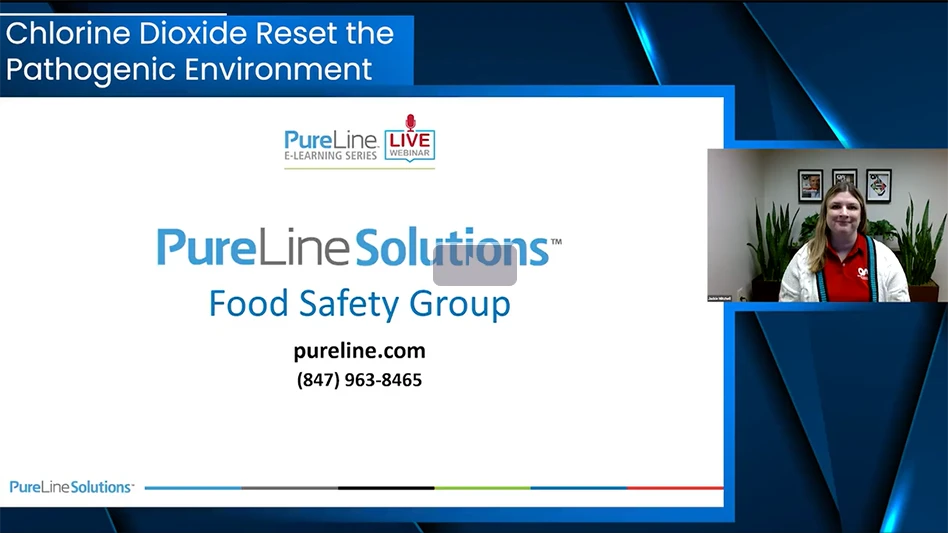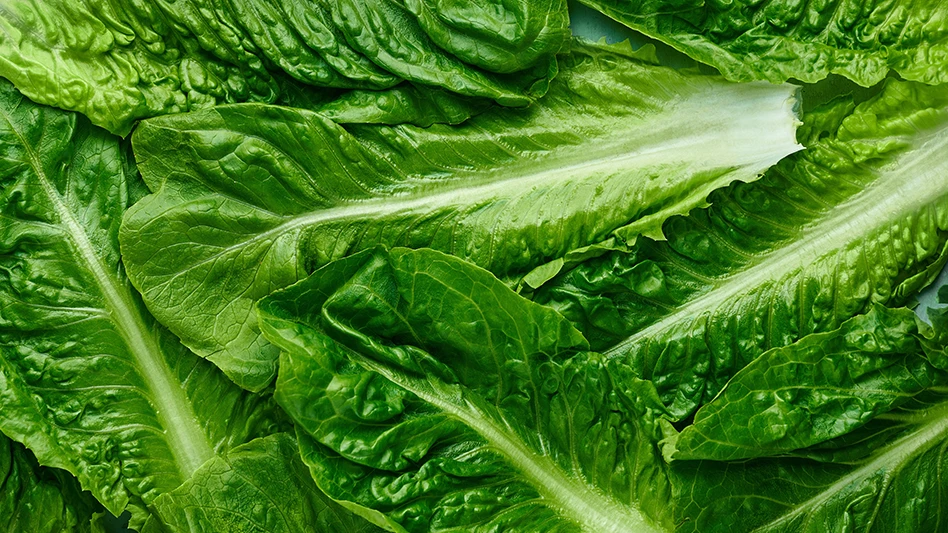 If you have or have had any birds perching, roosting, or nesting on or near your processing plant, you are likely to get more. One of the greatest attractants for birds is other birds.
If you have or have had any birds perching, roosting, or nesting on or near your processing plant, you are likely to get more. One of the greatest attractants for birds is other birds.
“Birds are attracted to their own droppings, feathers, nesting, and any signs of bird activity,” said Bird Buffer President & CEO Gary Crawford. Initially, there may be only one or two birds; but these can attract new birds, eventually increasing until you have a whole flock of birds on and around your facility.
The initial bird populations would have been attracted to the plant because most are good sources for the basic needs of the birds. “Birds are attracted to food production facilities by raw materials, end products or something in between,” said Innolytics CEO Erick Wolf. “Food production and processing generally involves heat which represents a powerful attractant for pigeons. Similar to rodent control, reducing the attraction often means more effective housekeeping or even changing processes to reduce the availability of food sources.”
“Birds are attracted to opportunities for food, shelter, safety, and nesting,” added Bird-B-Gone Ornithologist Rob Fergus, Ph.D. “Each species has its own requirements for these needs, but food and beverage plants may provide any or all of those things depending on their location, structural features, and management of food materials, wastes, and water.”
Even after a bird population is dispersed, its previous presence will continue to attract the flock as well as other birds if the areas are not thoroughly cleaned. “Birds find a territory and that’s where they continue to go,” Crawford said.
Birds also can smell the presence of other birds, said Bird-X Director of Marketing Alison James, and they then recognize the area as accommodating and safe because other birds are evidently able to live there. Because of this, “Good housekeeping is absolutely essential for any food processing,” added Bird-X Marketing Coordinator Kelly Nelson, with a thorough cleaning by people in proper safety apparel and equipment being a very important step in bird control.
Because large accumulations of bird droppings can be considered hazardous waste and transmit disease, thorough cleaning, disinfecting, and deodorizing of surfaces also is imperative to protect people from infection, said Nixalite of America Co-President Cory Gellerstedt. By maintaining proper sanitation and building maintenance, containing food sources, and eliminating water sources, plants can help reduce the attraction of birds.
Such cleaning must be maintained on an ongoing basis, Crawford said. This can be a frustration for some plants that clean with the intention of doing it once. “But if there is nothing to keep the birds away, they will keep coming back, and their droppings will continue to attract other birds.”
The greatest issue in many cases will be eliminating bird access to the potential food sources, Fergus said. Outdoor handling of food materials invites birds, so processing should be conducted inside whenever possible.
Grains are particularly attractive to non-native nuisance species such as pigeons, starlings, and house sparrows, as well as native grackles, blackbirds, and others, he said. “Crows and gulls are more omnivorous and are attracted to a wider variety of garbage and food sources. Larger birds will usually be more of a problem on and around a plant, whereas house sparrows, and sometimes pigeons or starlings, can also be a problem inside plants that are not sealed from them.”
Building Out Birds.
Reducing potential perching, roosting, and nesting sites also will reduce bird populations, as the birds will have nowhere to land even if they are attracted to the site.
To determine the number and different species of birds, conduct a bird control survey, Gellerstedt said. Make a note of all the areas where the birds are landing, roosting, and entering the facility. If the birds are not present at the time of inspection, look for nests and droppings around the facility, on the buildings, and below on sidewalks, awnings, signs, etc.
Look at the plant from a bird’s-eye view, Crawford added. Go up on the roof, look at the gutters, roof-mounted equipment, ledges, etc., to determine areas that birds may opt to perch, roost, or nest.
Once you’ve surveyed and secured the exterior, then it is primarily about keeping the birds out of the plant buildings, which, Fergus said, “is perhaps most difficult where large docking bays or other open doors are present and remain open.” To keep birds out:
- Use vinyl strip doors wherever they won’t interfere with plant operations.
- Seal other openings into the building with netting (when ventilation is needed) or more solid barriers to entry.
- Keep doors closed, and, where possible, install bug and bird screens on open windows and doorways.
- Perform routine maintenance to seal holes and cracks where birds may be entering the facility.
- Seal any hole over an inch in diameter, which can potentially provide access to house sparrows. Copper mesh, stainless steel wool, expanding foam, and hardware cloth may be used to seal small holes and gaps.
- If bird entry is a persistent problem, net off open rafters, eaves, and roof beams that provide perching places for birds so as to eliminate the bird’s ability to easily perch or roost above processing operations.
- Install vent guards on all external vents.
- Reduce visual ornamentation that provides ledges for bird perching. For example, switch out signs with “pop-out” letters with painted words to reduce perching ledges for perching and nesting holes (such as center section of Os).
- Reduce roof-mounted equipment, such as air conditioners and heat pumps. These emit warm air in winter making ideal bird perches.
- When possible, remove bird-attracting landscaping near the plant, such as large trees where the birds can nest and roost then fly to plant openings.
Perching Deterrents.
Keeping birds from settling on the facility in the first place is essential to long-term control. Ledges are attractive perching sites for pigeons; and nooks, vents, gutters, and other tight cavities can serve as nesting sites for starlings and house sparrows. A variety of mechanical products and techniques can be used to build out birds and deter their perching and roosting on the facility, including:
Bird netting is used to exclude birds from areas such as beams, pipes, canopies, and even entire roofs. “There are many different types of netting available but you should use strong structural bird netting that is constructed from UV stabilized high density polyethylene,” Gellerstedt said. For most applications, a mesh size of ¾ inch or smaller will exclude both small and large birds from buildings, and any structural gaps of less than ¾ of an inch need to be netted off.
“Bird netting is the primary tool for keeping birds out of large open areas, eaves, rafters, or other areas that cannot be otherwise sealed structurally,” Fergus said. Additionally, mist netting can be a humane way to trap individual birds, but is time and labor intensive to operate humanely—as the nets need to be monitored so the birds can be removed as soon as they become entangled. Handheld net launchers can be used in some circumstances to capture and remove individual birds.
- Upward-pointing spikes, angled bird slopes, post and wire (spring-tensioned wire held by posts), and gels. These mechanical barriers can dissuade and prevent pest birds from landing and roosting. These can be placed on ledges, parapets, roof ridges, gutters, signs, awnings, air conditioners, rafters, shutters, and almost anywhere a bird can land. Spikes may be made of metal or stainless steel, plastic, or a combination. The most versatile devices for both large and small birds will be those with spikes close together and pointing in different directions. If placing the spikes yourself, Gellerstdt said, “it is critical to protect the entire surface area and follow the manufacturer’s directions and specifications very carefully.”
In general, the stainless steel spikes will be more durable but may not be as aesthetic. “A company will often go with the most aesthetic solution in front, then use large metal spikes in the back to keep a low profile on the public face, which does not need to be a consideration in other areas,” James said.
- Electric shock systems. These devices have been used for more than 60 years to discourage birds from landing on protected surfaces, Gellerstedt said. When a bird comes in contact with the low voltage wire or track, it receives a mild shock that scares it away. The birds learn over time to stay away from the protected areas.
- Contraception. “Contraceptive programs are ideally suited for large facilities where exclusion may not be practical or cost effective,” Wolf said. At large facilities, especially where food production or processing occurs, population abatement is generally a requirement. In order to get ahead of a pest bird population by increasing mortality, the facility must kill the birds faster than they reproduce, he said. Pigeons breed up to six times annually, so it is often challenging to get ahead of the reproductive curve.
“Contraception represents a low impact alternative which gradually reduces the population of birds through attrition,” Wolf explained.
- Audio and visual deterrents. Electronic sonic/ultrasonic alarms and visual deterrents (such as strobes) can be effective if the sound or visual and frequency is regularly changed.
- Misting. Certain vapors, such as that converted from natural liquid grape extract, can be dispensed into the air to repel birds from an area.
- Bait and Trapping. In some cases where birds cannot be stopped from entering facilities, trapping and removal of pest birds may be needed on a continual or as-needed basis.
A complete bird management pro-gram will require a combination of sanitation, exclusion, deterrents, and/or abatement to truly build out the birds.
Whether a processing plant has an in-house pest control program or contracts with a pest management company, it can be beneficial for plant operators to contact a pest control operator for consultation or professional bird management service.
The author is Editor of QA Magazine. She can be reached at llupo@gie.net.

Explore the February 2014 Issue
Check out more from this issue and find your next story to read.
Latest from Quality Assurance & Food Safety
- Pet Food Company Implements Weavix Radio System for Manufacturing Communication
- Penn State Offers Short Course on Food Safety and Sanitation for Manufacturers
- USDA Announces New Presidential Appointments
- FDA to Phase Out Petroleum-Based Synthetic Dyes in Food
- IFT DC Section to Host Food Policy Event Featuring FDA, USDA Leaders
- CSQ Invites Public Comments on Improved Cannabis Safety, Quality Standards
- Registration Open for IAFNS’ Fifth Annual Summer Science Symposium
- Leaked White House Budget Draft Proposes Shifting Inspection Responsibilities from FDA to States





